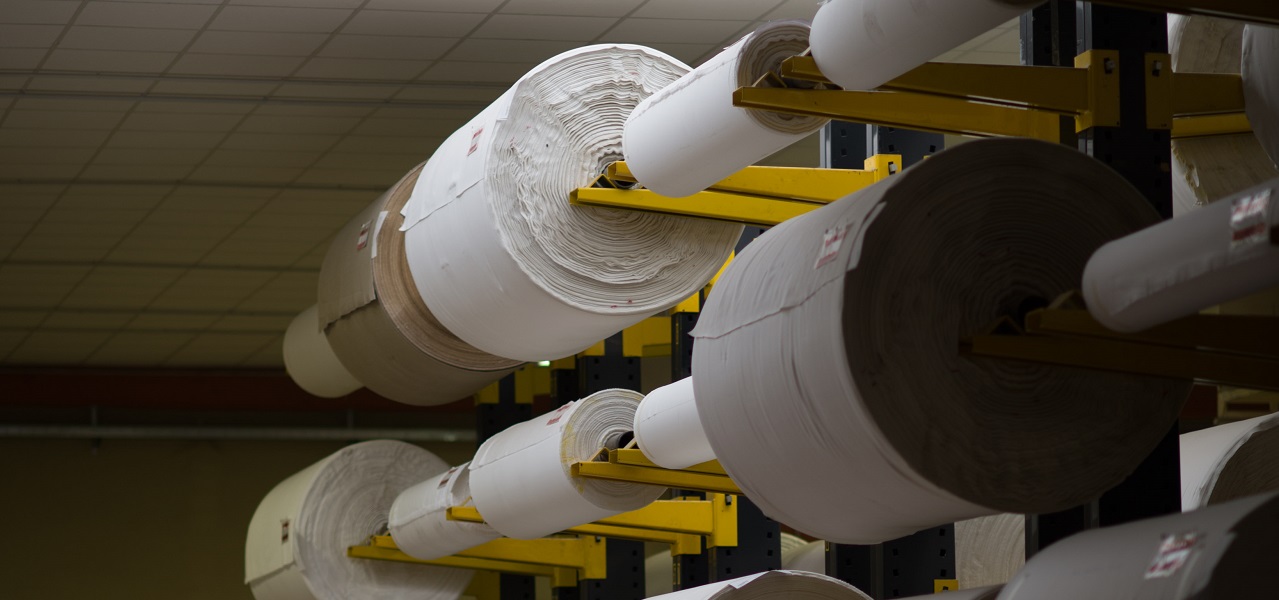According to an Eurotex survey, the post pandemic period showed an encouraging recovery sign for the European textile and fashion sector. In particular, in the second quarter of 2021, the turnover of the textile sector recorded an increase of +3.3%, while the improvement for clothing rose by 7%.
Next to this positive trend, today the sector is facing challenges related to the increase in shipping costs as well as energy ones (especially gas) that could undermine the recovery itself. As our Ceo Sergio Tamborini said: “There is no doubt that the perimeter of companies that are affected by the tensions on the purchase costs of raw materials is expanding, but the supply chain has to remain solid to protect made in Italy values. The increase in prices will be a mandatory choice, due to the fact that our supply chain has no longer margins. There is no company that can absorb these increases just as there is no company that can spare on raw materials at the base of the excellence and the quality of our production.
Ratti S.p.A. Società Benefit aims at providing its customers with everyday more excellent products and coherent service in order to fit the responsiveness required by the fashion system. This is the reason why it’s long since we have been introducing collaborative forecasting practices for textiles demand, based on information sharing with customer. Nowadays, early information sharing is not anymore a “nice to have” but it became the strategic enabler for ensuring availability of the right materials, with the right timing and controlling prices as well as overall costs.
As reported by general media as well as by industry focused information channels, since past spring a continuous increase of prices is registered for both energy/fuel and textile raw materials[1] (often due to shortage); at the same time we see a general worsening of transportation services (less availability/longher lead times/higher costs), both on long and short routes.Data show that this is not just another temporary situation; some examples are +39% increase of natural gas prices along Q3 2021 vs the same period in 2020[2], il +23% increase of raw silk [3] and +511% for shipping a container from Asia[4][5].
The consequences on the textile industry, assuming inertial evolution, results in a not negligible risk for fashion companies in terms of suppliers adjusting prices very frequently (upward), higher supply uncertainty for key materials, surging response lead times.
We want to catch such scenario, where the upstream supply market cannot but get harder, as an opportunity to furtherly develop and intensify the good collaboration practices with our customers, starting from fostering early visibility on the demand of key materials, both in terms of items and quantity, so to prearrange appropriate supply of textiles and yarns.
[1] https://sourcingjournal.com/topics/raw-materials/fiber-fabric-price-hikes-apparel-inflation-cotton-polyester-lenzing-wolverine-279905/
[2] https://www.ansa.it/pressrelease/economia/2021/08/02/energia-e-gas-forti-aumenti-nel-iii-trimestre-per-le-imprese_9d6b2386-87cf-476e-ad3c-f5627d8311a5.html
[3] Analysis of the Camera di Commercio di Como-Lecco on raw silk prices 20/22D grade 5A and 6A from China, August 2021 https://www.comolecco.camcom.it/pagina574_prezzi-seta-greggia-di-qualit-2022-gradi-5a-e-6a.html
[4] Deloitte weekly Global update – August 2021
[5] WCI, visited on September 9 2021 https://www.drewry.co.uk/supply-chain-advisors/supply-chain-expertise/world-container-index-assessed-by-drewry
Next to this positive trend, today the sector is facing challenges related to the increase in shipping costs as well as energy ones (especially gas) that could undermine the recovery itself. As our Ceo Sergio Tamborini said: “There is no doubt that the perimeter of companies that are affected by the tensions on the purchase costs of raw materials is expanding, but the supply chain has to remain solid to protect made in Italy values. The increase in prices will be a mandatory choice, due to the fact that our supply chain has no longer margins. There is no company that can absorb these increases just as there is no company that can spare on raw materials at the base of the excellence and the quality of our production.
Ratti S.p.A. Società Benefit aims at providing its customers with everyday more excellent products and coherent service in order to fit the responsiveness required by the fashion system. This is the reason why it’s long since we have been introducing collaborative forecasting practices for textiles demand, based on information sharing with customer. Nowadays, early information sharing is not anymore a “nice to have” but it became the strategic enabler for ensuring availability of the right materials, with the right timing and controlling prices as well as overall costs.
As reported by general media as well as by industry focused information channels, since past spring a continuous increase of prices is registered for both energy/fuel and textile raw materials[1] (often due to shortage); at the same time we see a general worsening of transportation services (less availability/longher lead times/higher costs), both on long and short routes.Data show that this is not just another temporary situation; some examples are +39% increase of natural gas prices along Q3 2021 vs the same period in 2020[2], il +23% increase of raw silk [3] and +511% for shipping a container from Asia[4][5].
The consequences on the textile industry, assuming inertial evolution, results in a not negligible risk for fashion companies in terms of suppliers adjusting prices very frequently (upward), higher supply uncertainty for key materials, surging response lead times.
We want to catch such scenario, where the upstream supply market cannot but get harder, as an opportunity to furtherly develop and intensify the good collaboration practices with our customers, starting from fostering early visibility on the demand of key materials, both in terms of items and quantity, so to prearrange appropriate supply of textiles and yarns.
[1] https://sourcingjournal.com/topics/raw-materials/fiber-fabric-price-hikes-apparel-inflation-cotton-polyester-lenzing-wolverine-279905/
[2] https://www.ansa.it/pressrelease/economia/2021/08/02/energia-e-gas-forti-aumenti-nel-iii-trimestre-per-le-imprese_9d6b2386-87cf-476e-ad3c-f5627d8311a5.html
[3] Analysis of the Camera di Commercio di Como-Lecco on raw silk prices 20/22D grade 5A and 6A from China, August 2021 https://www.comolecco.camcom.it/pagina574_prezzi-seta-greggia-di-qualit-2022-gradi-5a-e-6a.html
[4] Deloitte weekly Global update – August 2021
[5] WCI, visited on September 9 2021 https://www.drewry.co.uk/supply-chain-advisors/supply-chain-expertise/world-container-index-assessed-by-drewry


